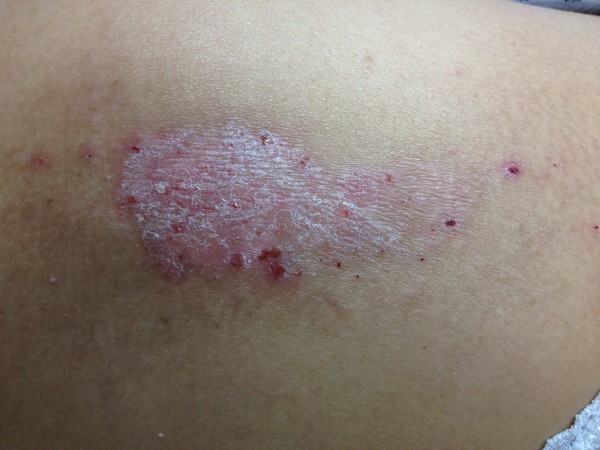What is Plaque Psoriasis
Plaque psoriasis, while different than skin ailments that are symptoms of a bacterial or viral infection, is also the symptom of an unhealthy skin barrier.
Plaque psoriasis is a red discoloration of the skin that can be flaky, itchy and sometimes even painful. It appears most commonly on the arms, legs, back, stomach and face. Plaque psoriasis appears as wrinkled, raised skin and gets its name from the white, chalky appearance often associated with the redness.
Unfortunately, it is not always easy to tell the difference between mild plaque psoriasis and dermatitis or eczema. Though a person who is not a trained medical professional should not try to diagnose a skin condition themselves, there are natural skin topicals and dietary strategies that are important to utilize and consume regardless of whether you suffer from plaque psoriasis, dermatitis, eczema or do not have a skin problem, but want to prevent one.

Cause of Plaque Psoriasis
Though plaque psoriasis appears similar to other diseases caused by bacteria and viruses, it is actually a symptom of a person’s skin reproducing new skin cells at an unnecessary rate. Plaque psoriasis can come about after a person’s skin is stressed, because of poor diet, because of dry skin or old age.
How to Protect or Improve Skin Health
Prior to having plaque psoriasis, a person’s skin barrier — the scientific term of which is cutaneous barrier — must begin to fail. The most destructive force to the skin barrier is dryness. There are two means by which to prevent dry skin: from the outside in and from the inside out.
The secret to finding a topical that prevents dry skin is finding one with lipids. Lipids are required for the skin to maintain its cutaneous barrier. Most lotions, olive oil treatments and general moisturizers do not have essential skin lipids. In addition, there is one lipid in particular that is necessary for the optimization of the skin barrier known as: stratum corneum lipids.
In addition to stratum corneum lipids, it is important to moisturize the skin from the inside out. That means eating correctly and avoiding foods and vices such as, alcohol and cigarettes, that dry the skin from the inside out.
Diet to Prevent or Fight Plaque Psoriasis
In order to maintain healthy skin and optimize your skin barrier, it is important to understand what your skin requires. To begin with, skin is primarily made up of collagen. Additionally, your skin requires large amounts of Vitamin D to repair damage created by exposure to UV rays. Vitamin E is required because it is a natural moisturizer.
The most important amino acid sources, at least with respect to your skin, are those that have the most complete amino chains. Whey protein is a good example of a complete amino source. Large amounts of antioxidants, enzymes and peptides are also critical for the body’s repair of its skin.
Vitamin C is necessary to prevent scurvy and is also a great antioxidant. It is antioxidants that are required to slow or eliminate plaque psoriasis.
+Dr.Lee Eberting is a board certified dermatologist that has dedicated her practice and research to develop skin care treatment options for conditions such as: eczema, psoriasis and rosacea. You can read more at cherylleemd.com
